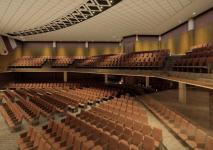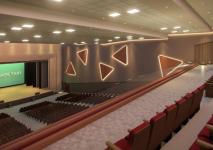Why acoustics are necessary
Acoustics is the study of sound and how it travels through space. In an auditorium, the acoustics can have a significant impact on the way that sound is heard by the audience. If the acoustics are not good, the sound may be muffled, echoey, or distorted. This can make it difficult to hear speech or music clearly, and it can also make it difficult to understand what is being said or played.
Mixing noise pollution with an intimate auditorium setting is almost always a bad idea, and as the song says, You need to separate it. There’s nothing like untimely noise pollution to ruin the flow of a good theatrical performance or vocal recital. For our purposes today, we will define “noise pollution” as any unwanted sound impeding at an unwanted time. When you’re engineering acoustical solutions for an auditorium, the importance of noise isolation is paramount, and it’s the only way to keep the “bad sound” out. Noise pollution can hinder speech intelligibility and greatly reduce the ability of an audience to hear and understand what is being said. In auditoriums, noise pollution can come from a wide array of culprits from within or without the facility.
FROM WITHIN
Space constraints in facility design can dictate how isolated the auditorium is from the rest of the building. In budget design, this means shared walls and common corridors – both of which can cause noise pollution. Other common noise sources include adjacent classrooms, music rooms, woodshops, and bathrooms with plumbing in the common wall. Less obvious is the noise that comes from the audio-visual control room. Many auditoriums have inadequate isolation in these tech-booths, and that often causes noise isolation problems. It can give your audience one more reason to consider the back of the auditorium “the cheap seats.”
FROM WITHOUT
Most of the above issues can be solved with better engineering, layout techniques, and design practices. Noise from outside the building, however, cannot be controlled as easily. For example, American Airlines and the railroad company aren’t going to stop their transportation schedules just so the local High School can hold its annual recital. Or bring it closer to home; the people attending the recital will not tolerate shutting off the air conditioners (thus, quieting the loud chillers) just to create a better listening environment. And just outside the building, no one is going to put up barricades to stop the loud trucks from driving by.
All of these factors can slowly stack up against you, and without proper noise isolation, it can ruin the effectiveness of even the best auditoriums. The good news is that, in most cases, the world of auditorium design is improving. Architects and acoustical engineers are working together more than ever to incorporate essential design principals as a way to keep the “bad sound” from impeding on the “good sound.” In other words, they’re helping us keep em’ separated.



